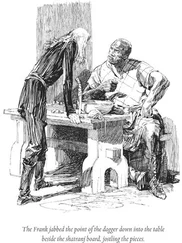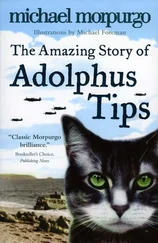A chime tuned to C-sharp sounded in his ear, and with an odd sense of relief he felt his tormented bowels empty into his trousers. The American caught him in his arms, looking startled and friendless and sad. The Geologist opened his mouth and felt the bubble of his saliva freeze against his lips. What a hypocrite I have been! he thought.
It took Joe nearly half an hour to drag the German across ten of the twenty meters that separated them from the hatch of Jotunheim. It was a terrible expense of strength and will, but he knew that he would find medical supplies inside the station, and he was determined to save the life of the man who, just five days before, he had set out across eight hundred miles of useless ice to kill. He needed benzoin, cotton wool, a hemostat, needle and thread. He needed morphia and blankets and the ruddy flame of a stout German stove. The shock and fragrance of life, steaming red life, given off by the trail of the German's blood in the snow was a reproach to Joe, the reproach of something beautiful and inestimable, like innocence, which he had been lured by the Ice into betraying. In seeking revenge, he had allied himself with the Ice, with the interminable white topography, with the sawteeth and crevasses of death. Nothing that had ever happened to him, not the shooting of Oyster, or the piteous muttering expiration of John Wesley Shannenhouse, or the death of his father, or internment of his mother and grandfather, not even the drowning of his beloved brother, had ever broken his heart quite as terribly as the realization, when he was halfway to the rimed zinc hatch of the German station, that he was hauling a corpse behind him.
Informal German territorial claims to the regions bordering the Weddell Sea had first been advanced in the wake of the Filchner expedition of 1911-13. Flying the eagle of the Hohenzollerns, the Deutschland, under the command of scientist and Arctic explorer Wilhelm Filchner, had sailed farther south into this grievous sea than any previous ship, battering its way through the semipermanent pack until it reached an immense, impassable palisade of barrier ice. The Deutschland then turned west and sailed for more than a hundred miles, finding no break or point of ingress in the sheer cliffs of the shelf that today bears Filchner's name; explorers invariably give their names to the places that haunt or kill them.
At last, with the end of the season only a few weeks away, they came upon a place, a fissure in the Barrier, where the level of the shelf dropped abruptly to no more than a few feet above sea level. A half-dozen ice anchors were quickly driven into the shore of this inlet, which the explorers named Raiser Wilhelm II Bay, and crates unloaded for the construction of a winter base. They chose a site some three miles inland for the erection of the hut, to which they gave the rather too-grand name of Augustaburg, and prepared to hunker down in the southernmost German colony until spring. A series of severe tremors in the ice, some lasting nearly a minute, and the subsequent calving, witnessed by the awed and deafened crew of the Deutschland, of a colossal iceberg a few miles east of the ship, put an abrupt end to their plans. After an uneasy week spent wondering and arguing whether they were about to be set adrift, they abandoned camp, returned to ship, and sailed north for home. They were almost immediately beset, and spent the winter being chewed by the molars of the Weddell Sea before warmer weather thawed them out and sent them limping home.
It was in the base camp abandoned by this expedition that Joseph Kavalier, Radioman Second Class, was found by the navy icebreaker William Dyer. He had been in intermittent contact with the ship via a portable radio set, giving more or less accurate readings of his position. Commander Frank J. Kemp, skipper of the Dyer, noted in his log that the young man had been through considerable hardship in the last three weeks, surviving two long solo flights conducted with only limited skill as a pilot and a dying man for a navigator, a crash, a bullet wound to the shoulder, and a ten-mile hike, on a fractured ankle, to this ghost town of Augustaburg.
He had been living in this hut, noted Commander Kemp, on thirty-year-old tins of meat and biscuits, his only company the radio and a dead penguin, perfectly preserved. He was suffering from the effects of scurvy, frostbite, anemia, and a poorly healed flesh wound, which only the Antarctic uncongeniality to microbes had prevented from becoming infected, perhaps fatally; he had also, according to the ship's doctor who examined him, gone through two and a half thirty-year-old boxes of morphine. He said that he had set out alone across the ice from the German station, crawling the last part of the way, with no intention of getting anywhere at all, because he could not bear to be near the body of the man he had shot and killed, and had chanced upon Augustaburg just as the last of his strength was failing him. He was taken to the base at Guantanamo Bay, where he remained under psychiatric examination and investigation by a court-martial until shortly before V-E Day.
His claim to have killed the lone enemy occupant of a German Antarctic base some seventy-five miles to the east of the hut where he was found was investigated and confirmed, and in spite of certain questions raised by his behavior and his handling of the matter, Ensign Kavalier was awarded the Navy's Distinguished Service Cross.
In August 1977 a huge chunk of the Filchner Shelf, forty miles wide and twenty-five miles deep, calved off from the main body and drifted north as a giant iceberg into the Weddell Sea, carrying with it both the hut and the hidden remnants, some ten miles distant, of the German polar dream. This event put an abrupt end to tourism at Augustaburg. Filchner's Hut had become a required stop for the intrepid tourists who were just then beginning to brave the floe-choked waters of the Weddell Sea. The people would tramp in from out of the wind with their guide and respectfully examine the piles of empty tins with their quaint Edwardian-era labels, the abandoned charts and skis and rifles, the racks of unused beakers and test tubes, the frozen penguin, shot for examination but never dissected, standing eternal vigil under a portrait of the Kaiser. They might reflect on the endurance of this monument to a failure, or on the dignity and poignance that time can bring to human detritus, or they might merely wonder if the peas and gooseberries in the neat rows of cans on the shelves were still edible, and how they might taste. A few would linger a moment longer, puzzling over an enigmatic drawing that lay on the workbench, done in colored pencil, frozen solid and somewhat the worse from long-ago folding and refolding. Clearly the work of a child, it appeared to show a man in a dinner jacket falling from the belly of an airplane. Although the man's parachute was far beyond his reach, the man was smiling, and pouring a cup of tea from an elaborate plummeting tea service, as if oblivious of his predicament, or as if he thought he had all the time in the world before he would hit the ground.
PART VI. T he LEAGUE of the GOLDEN KEY
When Sammy went in to wake Tommy for school, he found the boy already up and modeling his eye patch in the bedroom mirror. The bedroom furniture, a set from Levitz-bed, dresser, the mirror, and a hutch with drawers-had a nautical theme: the back wall of the hutch was lined with a navigation chart for the Outer Banks, the brass drawer pulls shaped like pilot's wheels, the mirror trimmed in stout hawser rope. The eye patch did not look all that out of place. Tommy was trying different kinds of piratical scowls on himself.
Читать дальше












